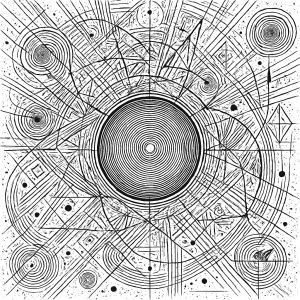InnerMotion - The Guidebook - What Is Conscious Dance?

Conscious dance is a movement practice dedicated to fostering mindful awareness, embodiment, emotional expression, and authentic connection through spontaneous and intuitive movement. Unlike traditional dance forms that emphasize structured choreography and external aesthetics, conscious dance encourages dancers to turn inward, prioritizing their inner experiences and feelings in the present moment. It is a space for exploration, where movement is not dictated by formal steps but emerges organically from within, allowing each participant to engage with their body in a unique and meaningful way. Some of the core components are:
- Embodiment - Embodiment in conscious dance refers to cultivating deep bodily awareness, presence, and sensitivity. Practitioners learn to feel fully grounded and connected within their bodies, exploring sensations, movements, and physical experiences as pathways to self-awareness and personal insight. Through movement, dancers reconnect with their natural rhythms and develop a heightened sense of proprioception - the ability to sense the position and movement of the body in space.
- Mindfulness - Mindfulness is the practice of paying intentional, non-judgmental attention to the present moment. In conscious dance, mindfulness involves gently observing one's sensations, movements, thoughts, and emotions as they arise and flow naturally. This promotes a deeper sense of clarity, presence, and acceptance. The dance floor becomes a space for self-inquiry, where movement is not only an expression but also a tool for cultivating awareness and relaxation.
- Emotional Expression - Conscious dance provides a safe and supportive environment for emotional exploration and expression through movement. Participants are encouraged to use their dance practice to express, process, and integrate a wide range of emotions. This can facilitate emotional healing, self-understanding, and greater emotional intelligence. Movement can serve as an outlet for emotions that might otherwise be difficult to articulate, allowing for catharsis and transformation in a non-verbal, embodied way.
- Community & Connection - One of the key features of conscious dance is the cultivation of supportive, inclusive spaces where participants can experience meaningful connections. Practicing in community encourages shared experiences, enhances empathy, and fosters a collective sense of belonging and growth. Dancing together strengthens interpersonal bonds and promotes a deep sense of interconnectivity, where individual movement is influenced by and contributes to the collective energy of the group.
- Creativity & Authenticity - Conscious dance values authenticity and creative expression over external form or technique. Participants are invited to move spontaneously, authentically, and without judgment or performance expectations. This creative freedom helps dancers discover and express their unique styles and personalities. By removing the pressure to perform or conform to specific movements, conscious dance creates a space where people can explore their inner worlds and expand their movement vocabulary in a way that feels natural and true to them.
Conscious dance invites everyone, regardless of dance background or physical ability, to experience the joy, healing, and transformative potential of mindful movement and authentic expression. It is a practice that encourages individuals to listen deeply to their bodies, move with intention, and embrace the full spectrum of human experience through dance.